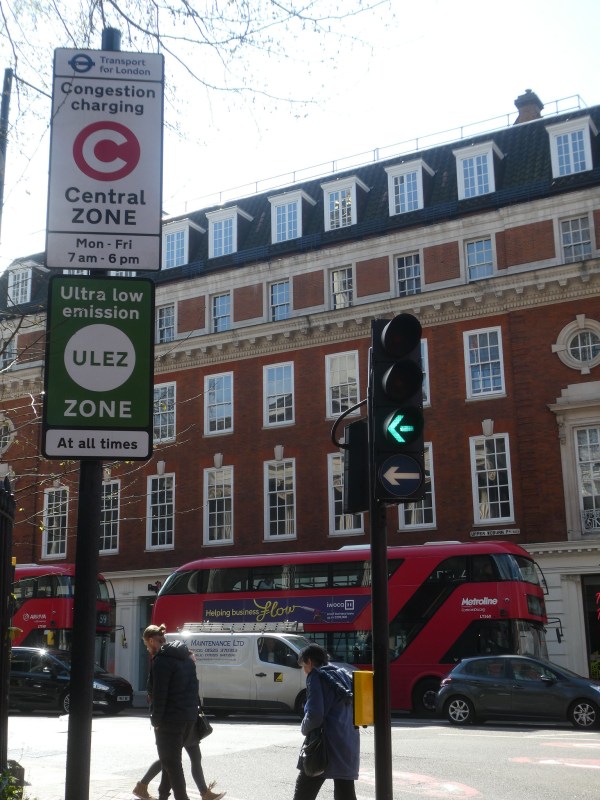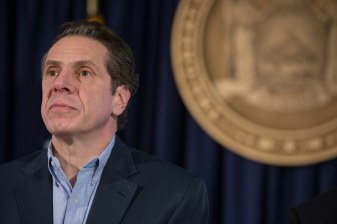Europe’s Congestion Pricing Lessons For America
Focusing on equity instead of revenue collection is a key toward ensuring a successful congestion pricing plan, transportation experts found.

Memo from Europe: U.S. politicians will have a hard time selling congestion pricing to voters if they fail to link the new tolls to benefits such as reducing traffic, cleaning the air or solving transportation inequity — and will never get such proposals approved by entrenched, entitled car owners if the scheme is seen merely as a way of balancing the budget, transportation experts say in a newly released report.
The problem, of course, is America’s car culture itself: Most commuters don’t take public transit and view congestion pricing as a tax, making it a huge political lift, even if there’s a groundswell of support for reform, these experts added.
“Any strategy that boosts transit by providing more service and allowing it to run more freely helps low-income travelers, but in the U.S., low-income households suffer from lack of access to public transit and from a system that is inherently inequitable,” Eno Center for Transportation Rob Puentes said in a statement to Streetsblog. “Congestion pricing can be a tool to actually correct those biases if coupled with investments in public transportation.”
And if it can be sold to voters.
To start that process, Puentes and his colleagues went to Europe to find out how exactly cities embraced congestion pricing. They returned with several lessons that could ensure similar success in America.
Mostly, they found that governments must invest heavily in public transit as well as bicycle and pedestrian networks before unleashing a pricing plan to give taxpayers decent alternatives and to show they’re getting something for their dollars.
And policymakers should ensure that car commuters experiences improvements on the road during pricing pilots and they should make adjustments quickly.
American motorists view roads as a free resource that gives them access to their destinations at any time without considering the costs on everyone else. Drivers tend to be wealthier than their transit-using neighbors, according to the census. And most car owners see tolls as a tax on them — which, sure, it is — rather than accepting that the users of roadways need to contribute the most to not only maintain those roads, but build better transit to reduce the need for roads.
But surcharges have been an easier sell in European cities with strong public transit systems that predominantly serve lower- and middle-class families. Road pricing policies were linked with goals to make commuting more convenient and improve the environment for generations while raising revenue was merely a byproduct.
European cities had a different reason for installing a road pricing plan.
London needed a diuretic to unclog roadways that impended growth. Some Stockholm leaders wanted to curb greenhouse gas emissions amid rising air pollution levels.
And it worked: The number of private vehicles entering London plunged 39 percent between 2002 and 2014 while cycling rose 210 percent over roughly the same period, and traffic volumes in Stockholm fell 16 percent within the toll zone and 5 percent just outside of it. The message is simple: Discourage driving and some drivers will stop doing it.
Both European metropolises’ plans found success while the Swedish city of Gothenburg sought to raise funds for a suburban rail tunnel and focused entirely on how the plan could generate revenue, making the pricing plan unpopular with the public.
That could spell trouble for some nascent proposals in American cities. Chicago Mayor Lori Lightfoot is considering a congestion pricing plan to fill a hole in the city’s budget, which Puentes believes is the wrong approach. And Connecticut Gov. Ned Lamont’s plan to toll the state’s major highways to raise revenue for its transportation budget bellyflopped this summer and will be scaled back this fall.
Other pricing plans have succeeded when they were framed as addressing a crisis. New York’s congestion pricing plan passed because it was sold as a way to generate $15 billion annually for the Metropolitan Transportation Authority’s crumbling transit system as well as thin out traffic jams along spans and avenues leading into Manhattan. Los Angeles officials initially sought a congestion plan to generate revenue for its Olympic bid, but are now examining how it would regulate the flow of vehicles around the city instead.
Now for New York’s plan to succeed it must continue to adapt the lessons of its European counterparts. That means building up a robust bike and pedestrian network to give commuters an alternative to driving or taking ride hail vehicles around town. Fortunately the City Council passed a “Streets Master Plan” this week that will create 250 miles of protected bike lanes and 150 miles of bus lanes within five years, which will overlap with the launch of congestion pricing in January, 2021.
Without all the work necessary to support congestion pricing, plans can stall indefinitely or fail.
Look at Washington D.C. whose leaders hope to reduce traffic volumes during rush hour despite daunting opposition from suburban drivers. And in Boston, public officials and advocates are vociferously debating plans to adjust its tolling on the Mass Pike, pitting transit advocates and some City Council members against Gov. Charlie Baker and Massachusetts drivers who staunchly opposes it.
Yet congestion pricing works when it is applied. Traffic will decline, childhood asthma and greenhouse gas emissions will drop, and our roadways will be safer. In America, that isn’t always enough.

